-
Member


Summer of the last season
Though it's a little out of date, I'd like to share one of my fishing trips in the last season with you.
I went fishing to the central mountain area in the second weekend of August (7-8th).
At that time, my job kept me busy and I couldn�t take a day off. So I left home on Friday night. My plan was to fish a stream from early morning on Saturday, stay at my regular inn, "Re-Rise", on that night, fish a different stream and come back home on Sunday. In advance, I asked the owner of the lodge, Mr. Nahuji, about the fishing condition around there. Nahuji-san suggested me some streams, but also added that there would be a lot of fishermen on weekends, meaning I would not be able to expect much anyway.
I chose one of the streams he suggested. It was a fairly large stream, which you may call the lower stretch a river. If there were fishermen already ahead of me in a very small stream, the fishing would be hopeless. On the other hand, the stream I chose has a rather long stretch of fishable water along with a road and I thought even if there were some fishermen already, I would probably be able to find a place for me.
I left my house after supper, and arrived at the gate on the logging road along the river at 0:30. In the beam of the headlights of my car, I saw 3 cars already parking in the opening in front of the gate. I slept for a few hours, woke up at 4:00 AM, and had two origami (rice balls) and banana for breakfast. I said good morning to fishermen of 2 cars, who were preparing for fishing, and started walking upstream along the road at 4:30. There was no man in the third car. The person (or they) had probably left already.
After a hike about 1 hour, I arrived at the place where 2 major tributaries, the North and South Fork, merge, forming the main stem of the stream. I headed along the North Fork, which was Mr. Nahuji actually recommended. I soon found a dam across the stream.

There was no pool above the dam. Instead, it was filled with earth and sand, and the stream was a shallow riffle there. I started fishing from just above the dam.

As I said, I didn't expect much, but surprisingly, I soon caught a very nice iwana.
There was no good pool in the riffle section, but fish responded from small eddies or holding water behind a small rock and I caught 3 fish.

One of them was 12 inches long, more than enough on Saturday for the stream with very high fishing pressure.

Within less than two hundred meters,the riffle section ended, and further up the stream, it regained its natural beauty with rocky cascades and pools, where, surprisingly again, response from fish stopped completely.
The contrast was so sharp that I wondered if there was a fisherman ahead of me. Indeed, I saw some new footprints on a sandy beach of the stream. One thing was certain; Even if the footprints had been made earlier on the day, he apparently didn�t' fish the riffle section. I continued fishing the beautiful stream without any signs of fish. After a while without a response, I gave up and returned to the point where I entered the stream.
There, I met another bait fisherman. I told him I had no response from good looking spots, but he went fishing anyway. I did say I caught some fish in the riffle section, but he, too, didn't seem interested in the riffle above the dam and went straight to beautiful looking waters.
Apparently, the shallow riffle section was ignored by bait fishers.
This is not surprising actually.
I had a similar experience before. I used to live in a big city area close to Tokyo. There were some watersheds containing trout within a day-trip range from home. Although those waters are stocked with juvenile trout in early summer and with larger (6-8 inches), catchable trout just before the opening day, most of the fish are taken away within the first few months of a season, because of extremely high fishing pressure by bait fishermen. At one time, I went fishing to one of those places. It was either Saturday or Sunday of late March, and the stream was extremely crowded as on usual weekends. It was so crowded that as soon as someone went away from a certain stretch of water of 50 or 100 meters, another one began fishing the same place. I couldn't find a water for me for a while, although there were several fishable tributary creeks. Remember, this is not some blue ribbon trout water in the US, where you can fish for rising trout in one big pool for a few hours, but they are just small mountain streams where the capacity of a stream for a day's fishing would be just a few people. I drove around and, in the lower part of a stream in a town area, found a stretch of water which seemed to be devoid of fishermen. There were high concrete dykes on both sides of the stream. The concrete was still clean and white, indicating the construction had just finished. The streambed was completely flat, being filled with earth and sand, and accordingly, the stream was just a shallow riffle throughout the stretch. I started to fish the water anyway because there was no other place I could fish. The fishing was, as you guess, pretty good. Though the stream was just a shallow riffle, there were still small eddies or shallow pools made by occasional logs or larger stones. Amago around 8 inches with sharp fin tips (probably stocked as juveniles in the year before) came from every one of those small holding waters. Well, considering the condition of the day and the place, I can say the fishing was excellent. A few hundred upstream, the construction area ended, and from there the stream became very beautiful with deep pools and pocket waters densely surrounded by trees, though I found some empty paper boxes of bait worms on the stream side. Also from there, fish response completely stopped.
One of the major reasons that Japanese bait fishers don't like shallow riffles lies in their tackle. They use a long telescopic rod, usually 4 to 5 meters long, with no reel. A monofilament or a short braided line is directly connected to the tip of the rod. Because of this, a bait fisher has to fish water directly beneath the rod, but this enables them to conduct almost perfect natural drift of the bait. Besides, many of them use live larvae of aquatic insects that they collect in the stream before starting fishing. I think you can imagine how effective this fishing is in small streams. Because of their tackle, however, they have to be close to a trout at least within the range of the rod length plus a few meters. This makes the bait fishing difficult in a shallow flat, where fish are very spooky, particularly when there is no cover for them. On the other hand, fly fishing has clear advantage in such waters; You can cast from way out of the trout's eye. Even if fly fishermen fish those streams, most of them don't kill trout and fish remains there.

After I said good-by to the bait fisherman, I remembered a large dam that I saw at the middle part of the stream when I was walking upstream that morning.

I walked down to its backwater, and, as I had guessed, there was also a stretch of shallow riffle above it.

There didn't seem to be many good hiding places for trout, but there were nice pools behind occasional log jams or at places where the stream changed its direction.

...and VOILA! There was a nice fish in every such pool.

It was as if nobody had fished there for a while. Trout even responded from a tiny eddy behind a tree which was in the middle of a riffle now because of the changing waterway of the stream.

A few hundred upstream, the riffle stretch changed into a typical beautiful mountain stream, where, again, the fish response stopped suddenly except for those from occasional tiny trout which were too small to grab a fly, and I called it a day.
While I was walking back to my car, I met a couple of young fishermen who had big backpacks. They were probably going to camp somewhere upstream. They asked me if I had fished the North Fork and how the fishing had been. I told them fishing was not bad, but there was at least another fisherman there, which made them a bit disappointed. When I arrived at the gate where I started walking that morning, there were 8 cars including mine. Some spin fishermen were fishing the stream close to the gate. This was truly a busy river.
On Sunday morning, I went to a creek, which was very small and steep. The stream was also suggested by Nahuji-san. There was also a gate on the road, but no car was parking there fortunately.

The creek was very pretty, but fish were not plentiful.

Apparently fishing pressure was also high.
Still, I could catch some small but beautiful trout.

Though small, this stream has potential to harbor large iwana, if there is no fishing pressure. Nahuji-san told me he once caught 15 inch iwana.

I left the stream at around noon.

No wander I had a feeling that streams were slippery everywhere in recent fishing trips.

I had soba (a kind of noodle) for lunch in a small restaurant in the village and returned home.
All in all, it was a good fishing trip. I caught several good fish in the first stream despite the presence of many other fishermen. I even felt odd joy of it, feeling as if I had outwitted other people. Nevertheless, I won't go fishing to that stream again, at least on weekends. Maybe I was just lucky this time, and next time I might find many footprints and no trout in those shallow riffles. Besides, I don't want to see such many cars and fishermen again.
Satoshi
 Members who have read this thread: 0
Members who have read this thread: 0
There are no members to list at the moment.
 Posting Permissions
Posting Permissions
- You may not post new threads
- You may not post replies
- You may not post attachments
- You may not edit your posts
-
Forum Rules

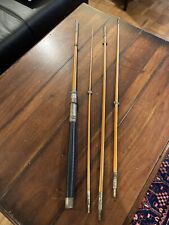
Antique Fishing Rod Combination Two Lengths Dated 1888
$65.00

Eagle Claw Wright and McGill 8 Foot 2 Piece Vintage Fishing Rod
$59.97

Vehicle Fishing Rod Holder 86.6 Inches Length Adjustable Polyester Strap
$14.71
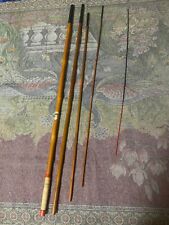
Old chinese fishing rod
$3500.00
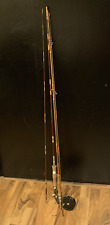
2 Vintage Fishing Rod Poles Reels - 7 ft - Actionrod Tubular #4280 Glass
$69.99
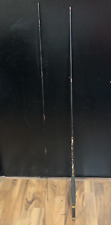
Vintage Berkley Hunter Graphite Sensitive Strong Fishing Rod Pole
$64.99
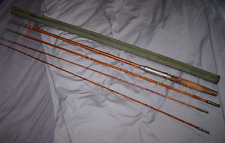
ANTIQUE 4 PIECE 8.5' BAMBOO CASTING FISHING ROD/UNMARKED/2 TIPS/HOLDER/NEEDS TLC
$35.00
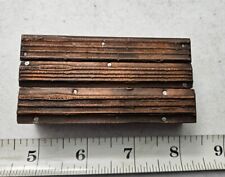
Vintage Letterpress Printing Block Bamboo Fishing Rod Lot
$60.00
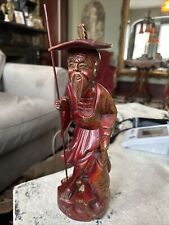
Antique Vintage Chinese Carving Asian Fisherman Fish Rod 12”
$59.99
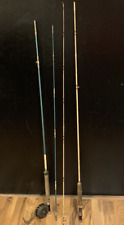
2 Vintage Fishing Rod Poles Reels 7 Feet Blue and Tan Color
$69.99






















 Reply With Quote
Reply With Quote











Bookmarks